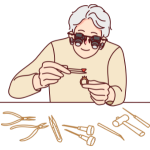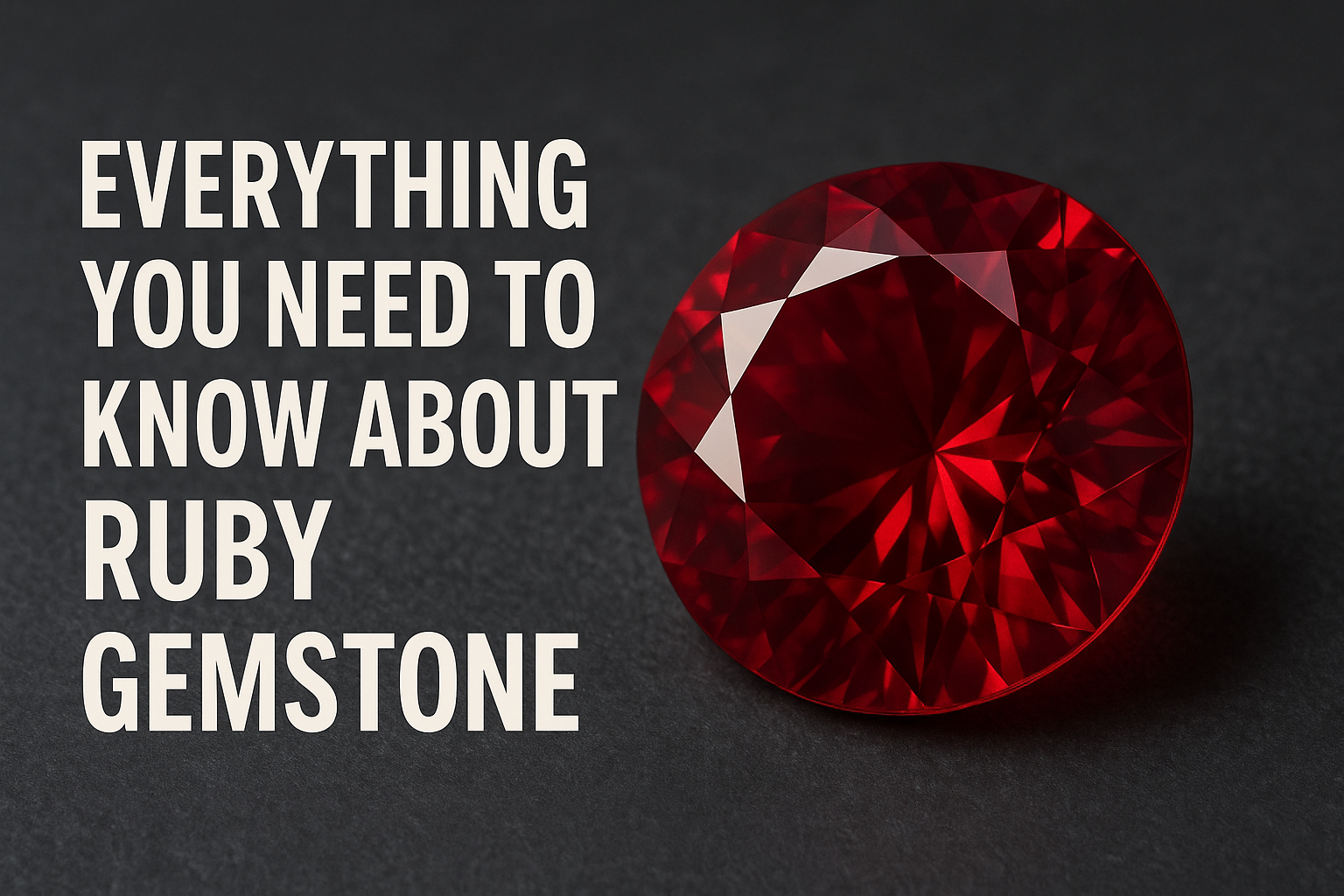Ruby stones have been valued since ancient cultures for their deep red color and rarity. They are considered the most valuable of all colored gemstones.
A perfect ruby is hard to find—especially untreated or unheated ones. Geographic origin matters. The Mogok region in Myanmar and Montepuez in Mozambique produce many of today’s significant ruby deposits.
GIA gemologists often look for clues like rutile inclusions or color zoning to identify quality. Faceted stones and ruby cabochons are both used in fine jewelry.
Whether you’re buying natural loose rubies or a ruby and diamond ring, quality varies sharply by treatment and source.
What Is a Ruby Gemstone?
A ruby is a red variety of the mineral corundum. When corundum turns red, it’s called ruby. That red color comes from chromium.
Without it, the crystal would be colorless or another hue—like pink sapphire or blue sapphire. Ruby gemstones are one of the most expensive gemstones per carat due to their rarity, strength, and bold color.
Some rubies are blood red, others lean pinkish or purplish red. The most valuable ones show deep saturation and an even hue.
The value of ruby increases if it’s unheated, has few inclusions, and comes from trusted ruby mine sources like Tanzania, Madagascar, or the Mogok region in formerly Burma (now Myanmar).
Even today, fine-quality rubies can command the highest prices of any colored gem. Some command over $1 million per carat.
Is a Ruby a Mineral?
Yes. Ruby is a mineral known as gem-quality corundum. The only thing that makes it “ruby” is the presence of chromium, which gives it the rich red tone.
Is Ruby a Quartz?
No. Ruby is not a quartz. Ruby belongs to the corundum family. Quartz has a Mohs hardness of 7, while ruby ranks 9.
Is a Ruby a Crystal?
Yes. Rubies are crystals. They grow in a hexagonal structure. Some are cut into faceted stones, while others are shaped into cabochons.
What Is Ruby Good For?
Rubies are used in:
- Jewelry: rings, necklaces, earrings, often paired in ruby and diamond designs.
- Birthstones: July’s birthstone.
- Collections: Natural, untreated ruby is highly collectible.
- Investment: Rare rubies can rise in market value.
Physical and Chemical Properties of Rubies
| Property | Description |
|---|---|
| Mineral Type | Corundum (Al₂O₃) |
| Color | Red to slightly purplish red (from Chromium) |
| Hardness (Mohs scale) | 9 (Second only to diamond) |
| Crystal System | Hexagonal |
| Luster | Vitreous |
| Transparency | Transparent to translucent |
| Common Treatments | Heat, lead glass to improve clarity |
| Refractive Index | 1.76 – 1.77 |
Where Are Rubies Found?

Rubies are found in several parts of the world, but not all are equal in quality. Natural rubies come from both older mines and newer commercial sources.
The region of Myanmar—especially Mogok—has historically produced the world’s finest stones. These are often called Burmese rubies and are prized for their pure red or vibrant red color.
Today, other ruby-producing countries also impact the ruby market:
- Mozambique: Now a top producer; many large-scale mines operate here.
- Thailand: Known for darker rubies with high durability.
- Cambodia and Vietnam: Produce ruby with slight zoisite and unique hues.
- Sri Lanka: Offers lighter-colored rubies, often shaped into cabochon cuts.
- Tanzania: Rich in ruby deposits, including fractured stones that often require heat treatments.
- Afghanistan and Pakistan: Produce small but vivid rubies.
Some stones are enhanced or lab-grown, but GIA gemologists use gemological tools to verify authenticity. The price per carat of ruby depends on origin, clarity, treatment, and color.
How Are Rubies Formed?
Rubies form under high heat and pressure. The red color comes from chromium replacing aluminum in the corundum crystal.
This happens inside metamorphic rocks like marble or gneiss. Over time, tectonic movement pushes the crystals closer to Earth’s surface where they are mined.
Ruby Chemical Formula
The chemical formula for ruby is: **Al₂O₃ + Cr (chromium traces)**
Types of Rubies
Rubies come in different types based on origin, treatment, color, and clarity. Each type affects the ruby’s value, price per carat, and how it performs in jewelry.
Not all rubies are created equal—some are natural and untreated, while others are enhanced or even synthetic. Below, I’ll break down the major categories so you know what you’re really looking at when choosing a ruby.
🔴 1. Natural Rubies
These are mined directly from the Earth and can be either treated or untreated.
- Untreated Rubies:
- Most valuable and rarest.
- Often come from the Mogok region of Myanmar, Sri Lanka, and Tanzania.
- Rich pure red or vibrant red hues.
- Often certified by a GIA gemologist or other gemological lab.
- Treated Rubies:
- Most rubies on the market today are treated.
- Common methods include:
- Heat Treatments – Improves clarity and color.
- Lead Glass-Filled Rubies – Fills fractures to improve appearance.
- Diffusion Treated Rubies – Alters surface color using chemicals and heat.
🧪 2. Synthetic or Lab-Grown Rubies
Lab-grown rubies have the same chemical formula as natural ones (Al₂O₃ + Cr), but they’re made in a lab.
- Flame Fusion Rubies:
- Also called Verneuil rubies.
- Cheap and easy to mass-produce.
- Flux-Grown Rubies:
- Higher quality and slower to produce.
- Can mimic natural rubies very closely.
Note: Lab-grown rubies are less expensive but not fake—they’re just not natural.
3. Rubies by Geographic Origin
| Origin | Notable Traits | Common Treatments |
|---|---|---|
| Myanmar | Blood red, high saturation, few inclusions | Minimal or heat only |
| Mozambique | Rich red, often fractured | Heat and sometimes glass |
| Thailand | Darker tones, high durability | Heat-treated |
| Cambodia | Slightly purplish hue, often cut as cabochon | Heat or untreated |
| Sri Lanka | Lighter reds, pinkish stones | Sometimes untreated |
| Tanzania | High chromium content, some zoning | Often heat-treated |
4. Color Variants
- Pigeon Blood Ruby: Deep blood red with high saturation and no secondary tones. Most desired.
- Pinkish or Purplish Red Rubies: Less saturated, may be classified as pink sapphire in some markets.
- Zoned Rubies: Uneven color; less valuable.



Leave a Reply